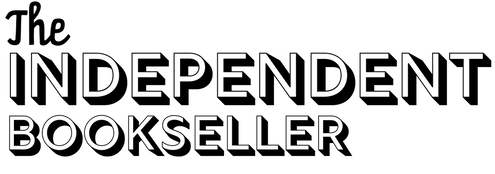|
(Originally Published January 6 2018 via Medium) How does the sudden demise of the fourth largest bookstore chain in the country bode well for independent bookselling? It confirms that the business models of the vast majority of indie stores can succeed, and are succeeding, where largescale chains cannot. Why did Book World close? Why all of their stores? Why all of a sudden? Suprisingly, it had little to do with books. Many of Book World’s locations were in shopping malls, which depend on anchor stores like Macy’s, Kohl’s, Herbergers, etc to bring traffic to the rest of the shops. As is welldocumented and much discussed, this retail segment has been struggling mightily in recent years. Book World’s senior VP Mark DuPont attributed the chain’s closure directly to the struggles of these non-bookstore retailers in the Publishers Weekly article that broke the news: Dupont attributed the downturn to the national consumer shift towards e-commerce and away from large department stores. This, Dupont wrote, “has triggered the loss of vital mall anchor stores and a downward spiral in customer counts, reducing sales to a level that will no longer sustain our business.” Despite a recent New York Times article suggesting that people only buy books on the Internet, this was neither Book World’s given reason for their closure nor was it an accurate statement. Stores in a closed mall saw losses of nearly 40% over the year prior, DuPont told the Midwest Independent Booksellers Association (MIBA). Book Worlds non-mall stores performed significantly better, but not well enough to compensate for the company’s overall losses. “Essentially, looking at the decline we didn’t see a way to reverse that. I put together an extensive proposal to only close the poorly performing stores, but it still came down to the continued decline of the rest of the stores. Everybody in house felt like online retail was cutting too much into our market.” If you’ve ever been into a Book World, you’ll know that it’s a little different from most independent bookstores. In fact, it’s different enough that there is and has been significant debate within the independent bookseller community about whether the chain qualifies as “independent.” Technically, it is a privately held, family-owned company that operates multiple locations. But all of the locations functioned under policies originating from the company’s main headquarters in Appleton, WI. Purchasing, advertising, and branding were consistent throughout all of their stores. Stores did not operate individual websites. Furthermore, Book World’s model was much more invested in magazines and periodicals than a typical indie bookstore, with an inventory that skewed heavily toward bestsellers and mass market paperbacks—a very different feel from stores that curate books to the tastes of their owners, staff, and customers. This is not to say that Book World was oblivious to their clientele; rather, due to Book World’s larger operation they weren’t able to be as flexible or responsive as a smaller-scale operation. So when DuPont says that “online retail was cutting too much into our market,” the market he’s speaking about is not necessarily book sales, but a specific type of book sales. Book World was by and large in the business of competing directly with online retailers, and not just for market share on physical book sales, though this is of course a major factor. The majority of their inventory also comprises the most common books to be purchased on e-readers and audiobooks, so their sales were also affected by those technologies as well. How is the rest of the industry is faring against exactly the same challenges that faced Book World? In the era of online retail, disruptive technologies, and a stagnant economy, book sales in retail stores across the country are increasing, according to statistics compiled by NPD Bookscan and reported by Publishers Weekly. For the second consecutive year, book sales have increased nationwide. Furthermore, (t)he unit gain was driven by the retail and club channel, where sales rose 3.5% in 2017 over 2016. Units in the channel hit 593.7 million units, compared to 573.8 million units sold in 2016. Sales via the mass merchandisers channel fell 6.7% in the year, dropping to 93.6 million units, down from 100.4 million units in 2016. In addition to increased sales, the country is still experiencing a resurgence in small independent bookstores. Between 2009 and 2015, the ABA reported a 35% growth in the number of independent booksellers, from 1,651 stores to 2,227. In Book World’s region, MIBA also confirms that their membership has reached record highs, with more stores opening each year than closing, and most stores seeking to sell are finding new owners to take over rather than having to close. (If you need more convincing, check out this great video by Amelia Kunhardt, lifted from the above-linked article on Quartz.com, originally published with permission of Harvard Business School Working Knowledge, where it first appeared.)
0 Comments
Your comment will be posted after it is approved.
Leave a Reply. |
All content © 2023 The Independent Bookseller™www.TheIndependentBookseller.com
[email protected] The Independent Bookseller PO Box 17431 Minneapolis MN 55417 |
AboutAdvertisingConsultingSupport |
Receive a weekly email compiling the most important bookselling news, deadlines, and updates from around the industry. If you only want to read one book-industry newsletter, this is the one for you.
|

